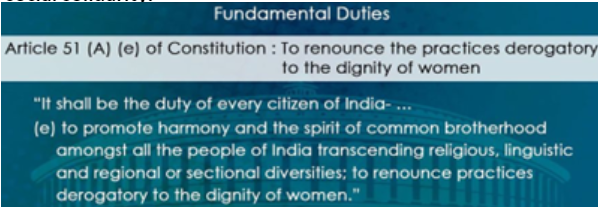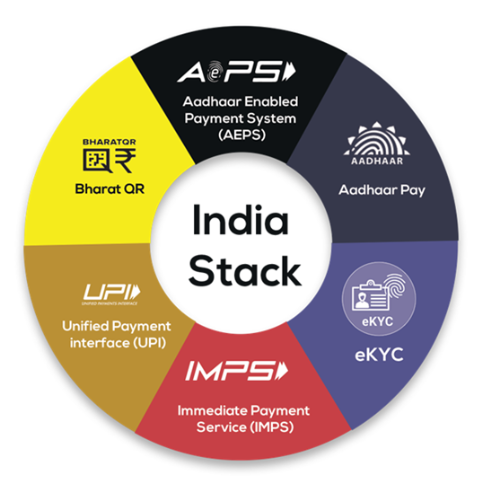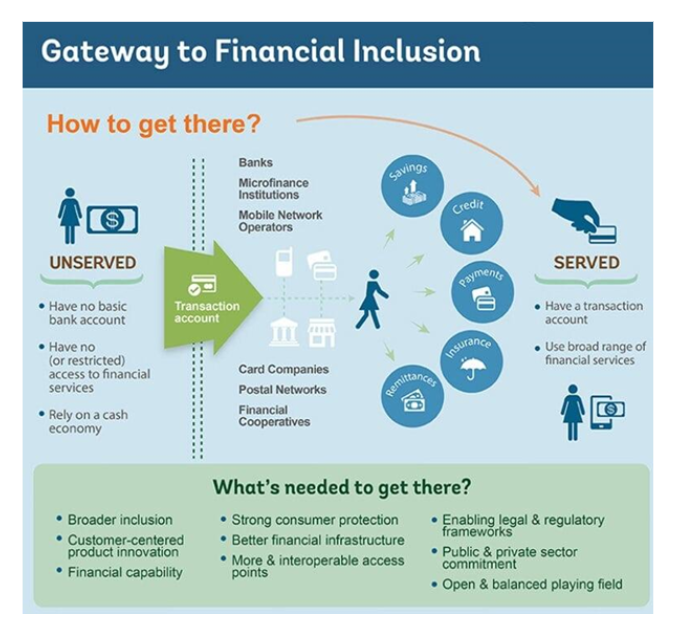Thursday, 14th September 2023
India’s supply Chain Opportunities
In News: Amidst the efforts to cut dependence on China-centric global supply chains, the G20 announcement on the India-Middle East-Europe Economic Corridor (IMEC) has the potential to make India an Asian hub in global supply chains.
About India-Middle East-Europe Economic Corridor (IMEC):

- The launch of IMEC was announced by the Indian PM at the G20 leader’s summit. The project includes India, UAE, Saudi Arabia, European Union, France, Italy, Germany and the US.
- The rail and shipping corridor is part of the Partnership for Global Infrastructure Investment (PGII), a collaborative effort by G7 nations to fund infrastructure projects in developing nations. PGII is considered to be the bloc’s counter to China’s Belt and Road Initiative.
- The corridor will include a rail link as well as an electricity cable, a hydrogen pipeline and a high-speed data cable to enable greater trade among the involved countries.
What are Supply Chains?
- Supply chains, also known as global production networks or global value chains, refer to the geographical location of various stages of production such as design, production, assembly, marketing, and service activities in a cost-effective manner.
- The shift in industrial production from local and regional supply to global supply took place gradually over the last 100 years. Global supply chains have been the leading model of industrial production since the 1980s
Reasons for shifting of global supply chains moving away from China:
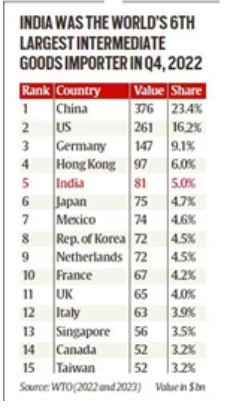
- Declining preference for China: Even before Covid-19 pandemic, Western firms had begun to reduce their reliance on China, and its popularity as a sourcing market was diminishing.
- Shift to cost effective locations: Some production stages in Chinese supply chains, particularly the labour-intensive ones, are moving to lower-cost locations due to rising wages and supply chain bottlenecks within China, and investor concerns about tighter regulation of foreign firms.
- Risks of concentration of Supply chains in China: The global risks of supply chains concentrated in mainland China and Hong Kong together accounting for 20% of world exports of intermediate goods.
- Geopolitical relations of China: Internal risks and the country’s trade war with the US, is forcing multinational companies to rethink their global sourcing strategies.
- Considerations of profitability are influencing a trend of relocating production either to friendly countries or back to the US despite high costs of shifting a supply chain.
India as an attractive supply chain hub:
- Emerging Manufacturing Hubs: India can become a complementary Asian manufacturing hub to China by reaping gains from foreign technology transfers and creating value-adding jobs.
- Mature sectors: Manufacturing sectors in India such as automotives, pharmaceuticals, and electronics assembly are already mature sectors, and likely to emerge as winners in this race.
- Geopolitical and economic factors: WTO lists India as the fifth largest importer of intermediate goods in 2022 Q4, suggesting that geopolitical and economic stability will attract foreign investors.
- New Trade Policy: Trade policy has placed renewed emphasis on preferential trade through a flurry of bilateral deals with trading partners.
- India’s Free Trade Agreements (FTA) with several countries such as UAE-India CEPA, early harvest for the Australia-India FTA. These new deals reflect plans for deep economic integration.
Strategies to promote regional supply chains in South Asian:
- Up scaling the Make in India Programme into a Make in South Asia Programme: India can provide fiscal incentives to Indian manufacturers to expand into Bangladesh and Sri Lanka, which are in apparel supply chains.
- Conclusion of comprehensive bilateral FTA with Bangladesh and Sri Lanka to support regional rules-based trade and investment.
Way Forward:
- Promotion of export-oriented FDI: Maintaining an open-door policy toward FDI in manufacturing and facilitating investment at a high level, with competitive fiscal incentives and creation of modern SEZ as public-private partnerships.
- Local companies need smart business strategies to join global supply chains as compared to big companies who have advantages due to the larger scale of production and access to foreign technology, and ability to spend more on marketing.
- Cautious approach towards adopting China’s interventionist styles as there is a significant risk of government failure and cronyism
- Better targeting of multinationals in new industrial activities in which there may be a potential comparative advantage and better coordination between the central and state governments.
- Upstream investment in tertiary-level education in science, technology, engineering, and mathematics.
Reasons behind Morocco’s earthquake
Why in News: Recently, Morocco has been hit by a powerful earthquake with a magnitude of 6.8, causing a death toll exceeding 2,400 people. Its epicentre was located in the Al-Haouz province, in the Atlas Mountains of the historic city of Marrakech.
Reasons for the earthquake in Morocco:
- Morocco is situated in a region where the Eurasian and African tectonic plates converge.
- The Atlas Mountains, where the earthquake occurred, are actively rising due to the convergence of these two large tectonic plates.
- Although the region had not experienced major recorded earthquakes before, stress had been accumulating underground for an extended period due to the slow movement of tectonic plates.
- The Oblique-Reverse Fault is present in areas of compression along the convergent plate boundaries. The stress along these fault lines can induce earthquakes as rocks abruptly shift to release accumulated stress.
Reasons for heavy damage in Morocco:
- The epicentre of earthquake roughly 18.5 km below the Earth’s surface. So, it was a very shallow earthquake. Shallow earthquakes carry a much higher amount of energy when they hit the surface.
- The earthquake’s epicentre was in the High Atlas Mountains which is close to the city of Marrakesh, causing it to affect populated areas and infrastructure.
- Earthquakes are not very common in North Africa. Therefore, Morocco was not prepared for such a calamity.
- Many changes were introduced to construction rules after Morocco faced the earthquake in 1960, but buildings in rural areas and older cities are not built to withstand the earthquake. Many houses collapsed in Marrakech, a UNESCO World Heritage Site.
Types of Faults:
- Dip Slips:
- In these faults, the movement is along the direction of the dip plane.
- Vertical movement either up (reverse dip-slip) or down (normal dip-slip) along the fault plane.
- Strike-Slip Faults:
- In these faults, the movement is horizontal along the fault plane and is parallel to the strike of the fault.
- These faults are common where tectonic plates slide past each other horizontally.
- Oblique-Slip Faults:
- These faults show characteristics of both dip-slip and strike-slip faults.
- Movement occurs in two directions – horizontal (strike-slip) and vertical (dip-slip) along the fault plane.
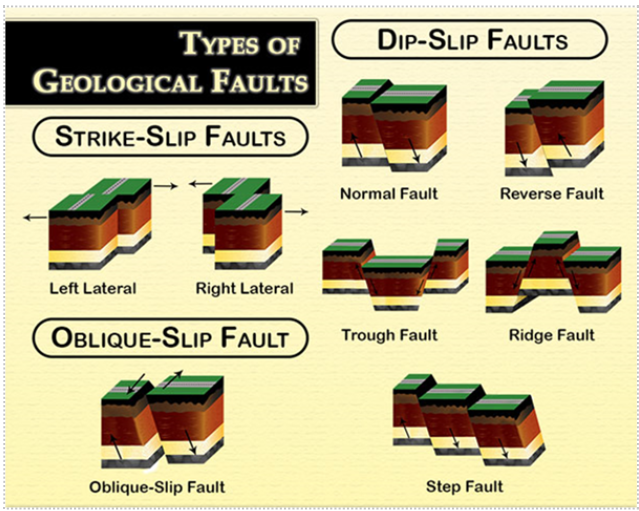
Earthquake prone areas in India:
- The Western Himalayas in India are considered one of the most dangerous seismic zones globally.
- The entire Himalayan region, spanning from the Hindu Kush mountains to Arunachal Pradesh, is at risk of a major earthquake with a magnitude exceeding 8 on the Richter scale.
- This is because of the substantial energy accumulation along fault lines due to the ongoing interaction of various tectonic plates.

Way Forward:
- Earthquakes cannot be accurately predicted because there is currently no equipment or method to detect precursory signals within the Earth that would indicate an impending major earthquake.
- However, we can mitigate their impact. Through integrated studies of the region’s geology, geophysics and geodesy we can find out where there are active earthquake faults.
- We can also estimate how powerful the earthquakes on these faults could be and how often they might happen again.
- The best way to minimise earthquake damage is to improve seismic building design codes to withstand the highest possible seismic activity.
- Traditional homes and rock constructions in mountain villages should be reinforced to prevent future disasters.
https://indianexpress.com/article/explained/explained-global/earthquake-morocco-8932001/
Global Biofuel Alliance - Edukemy Current Affairs
Why in News: Recently, on the side lines of G20 Summit, India has launched the Global Biofuels Alliance, which aims to accelerate the transition to sustainable biofuels and reduce the world’s dependency on traditional fossil fuels.
Biofuels:
- Biofuels are renewable energy sources derived from biomass, such as crop stubble, plant waste, and municipal solid waste.
- Biofuels may be solid, liquid or gaseous in nature.
- Solid: Wood, dried plant material, and manure
- Liquid: Bioethanol and Biodiesel
- Gaseous: Biogas
- Various Generations of Biofuels:
- First generation: It is produced from consumable food items containing starch (rice and wheat), sugar (beets and sugarcane) for bio-alcohols, or vegetable oils for biodiesel.
- Second generation: It is mainly obtained from non-food feedstocks such as forest/industry/agricultural wastes and waste or used vegetable oils.
- Third generation: It is known as ‘algae fuel’ and is derived from algae in the form of both biodiesel and bio-alcohols.
- Fourth generation: Like the third generation, 4G biofuels are made using non-arable land. However, unlike the third, they do not need the destruction of biomass.
Global Biofuels Alliance:
- It is an India-led Initiative to develop an alliance of Governments, International organizations and Industry to facilitate the adoption of biofuels.
- A total of 19 countries and 12 international organizations have so far agreed to join the alliance, including both G20 members and non-member countries.
- India, Brazil and the US are the founding members of the alliance.
- India, the US and Brazil account for a total of 85 percent of the global ethanol production with the US holding 55 per cent share followed by Brazil 27 per cent and India 3 per cent.
Significance of Global Biofuels Alliance:
- India sees this alliance as a means to advance energy transitions in developing countries and promote a circular economy.
- India, a major oil importer, is working on building its capacity to produce biofuels, particularly from sugarcane and agricultural waste.
- India aims to increase the blending of ethanol in petrol to 20% by 2025 and is establishing compressed biogas (CBG) plants.
- The initiative aligns with India’s goal of transitioning to alternative fuels and reducing its carbon emissions, with a target of achieving net-zero emissions by 2070.

Ayushman Bhav Campaign - Edukemy Current Affairs
In News: Recently, the President of India virtually launched the Ayushman Bhav Campaign.
About
Ayushman Bhava is an umbrella campaign that will ensure the optimum delivery of health schemes to every intended beneficiary, including those in the last mile.
Component of Ayushman Bhava Campaign
- Ayushman Apke Dwar 3.0: It aimed at the creation and distribution of Ayushman cards to all remaining eligible beneficiaries;
- Ayushman Mela: Weekly health melas will be held at the level of AB-HWCs and Community Health Centres (CHCs) and
- Ayushman Sabha: A village/ward level sabha to be held to enhance awareness about various health care schemes and services.
- Ayushman Gram Panchayat’: The campaign will eventually ensure gram/nagar panchayat to attain the status of ‘Ayushman Gram Panchayat’ or ‘Ayushman Ward’ with saturation of selected health indicators.

National e-Vidhan Application - Edukemy Current Affairs
In News: Recently, the President of India inaugurated the ‘National e-Vidhan Application (NeVA)
About
- The National e-Vidhan Application (NeVA) is a significant component of the "Digital India Programme" by the Government of India, encompassing 44 Mission Mode Projects (MMPs).
- Its primary objective is to facilitate the transition of all State Legislatures into a paperless environment, effectively converting them into 'Digital Houses.'
- NeVA is designed as a versatile and member-centric application, agnostic to the type of device used. Its purpose is to empower legislators by providing comprehensive information at their fingertips.
- This information includes member contact details, procedural rules, notices, bills, starred/unstarred questions and answers, committee reports, and more, all accessible via handheld devices or tablets.
- As of the present status, 21 State legislatures have entered into Memorandums of Understanding for the implementation of NeVA, with the project receiving approval from 17 of these legislatures.
- The Nodal Ministry overseeing the NeVA initiative is the Ministry of Parliamentary Affairs.
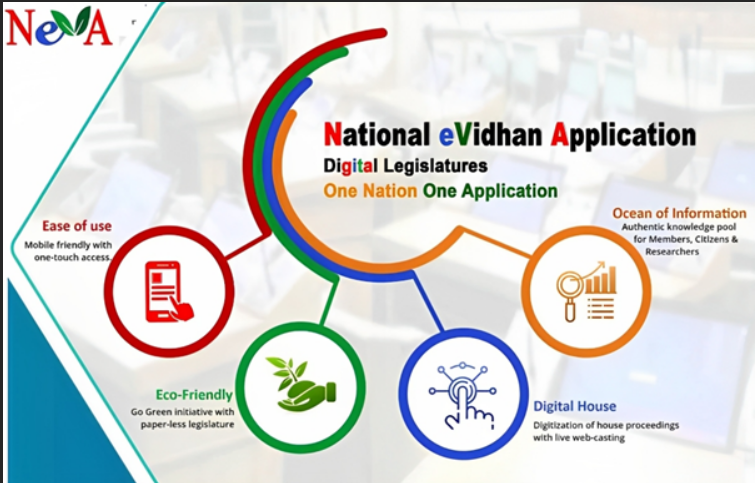
Nipah Virus - Edukemy Current Affairs
In News: Two deaths were reported in Kerala due to the Nipah Virus.
About
- Nipah virus (NiV) is a zoonotic virus (it is transmitted from animals to humans) and can also be transmitted through contaminated food or directly between people.
- In infected people, it causes a range of illnesses from asymptomatic (subclinical) infection to acute respiratory illness and fatal encephalitis.
- The virus can also cause severe disease in animals such as pigs, resulting in significant economic losses for farmers.
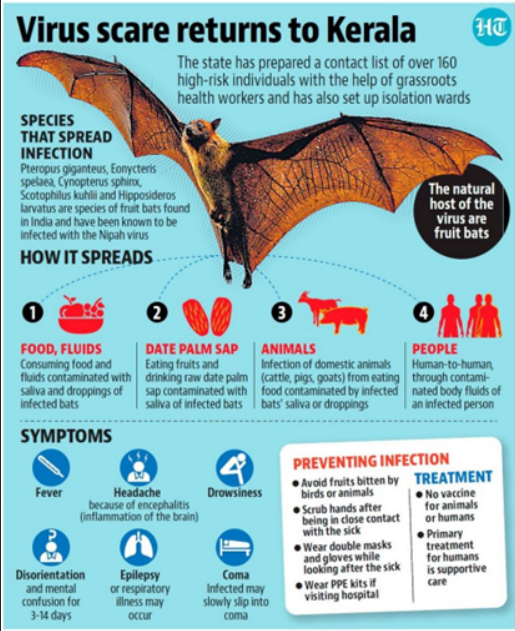
Araku Coffee - Edukemy Current Affairs
In News: Recently, Araku Coffee was gifted to G-20 delegates by the government of India
About
- Araku Valley Arabica coffee can be described as coffee from the Eastern Ghats hilly tracks of Visakhapatnam district of Andhra Pradesh and Odisha region grown at an elevation of 900-1100m Mean Sea Level (MSL).
- The coffee is grown in the hilly terrains of Ananthagiri, Paderu, Pedabayalu, G Madugula, Koraput, etc.
- These coffee beans bear the essence of the valley's rich soil and temperate climate. Pure Arabica with a rare aromatic profile, Araku Coffee is known for its unique texture and symphony of flavors.
- Farmers grow coffee without the use of machines and chemicals.
- This variety is produced by the tribals, who follow an organic approach in which they emphasize management practices involving substantial use of organic manures, green manuring, and organic pest management practices.

Araku Coffee is often referred to as "India's answer to Blue Mountain coffee" due to its excellent flavor profile and premium quality.
2nd Berlin Forum on Chemicals and Sustainability
In News: Recently, the environment minister participated in ‘High-Level Dialogue on Human Health and Environment convened under the 2nd Berlin Forum on Chemicals and Sustainability
About
- The 2nd Berlin Forum on Chemicals and Sustainability is a prestigious event focused on offering strategic direction and impetus for addressing critical global concerns related to the responsible handling of chemicals and waste.
- Hosted by the German Federal Ministry for the Environment, Nature Conservation, Nuclear Safety, and Consumer Protection (BMU).
- This forum seeks to galvanize political support and enhance the level of ambition for the ' Strategic Approach to International Chemicals Management (SAICM) Beyond 2020 agenda during the forthcoming 5th meeting of the International Conference on Chemicals Management (ICCM5).
- The inaugural Berlin Forum on Chemicals and Sustainability underscored the imperative of establishing a science-policy interface (SPI) for the management of chemicals and waste.
The complex path of biofuel Sustainability
Exam View: About Biofuels; About Global Biofuel Alliance; Challenges to scaling up of Biofuel in India; Measures for decarbonization of transportation.
Context: While electric vehicles are being rapidly adopted, use of biofuels is also being promoted for addressing environmental concerns. The Global Biofuels Alliance formed at the G-20 Summit is expected to strengthen the development of sustainable biofuels, in addition to promoting ethanol uptake.
About Biofuels:
- Biofuels are the fuel derived from the biomass of plants or animal wastes. It is commonly produced from corn, sugarcane and animal waste like cow dung. These come under renewable energy as its sources are renewable unlike fossil fuels.
- These can be used to replace or can be used in addition to diesel, petrol or other fossil fuels for transport, stationary, portable and other applications.
- There are different generations of biofuels based on the source of their production.
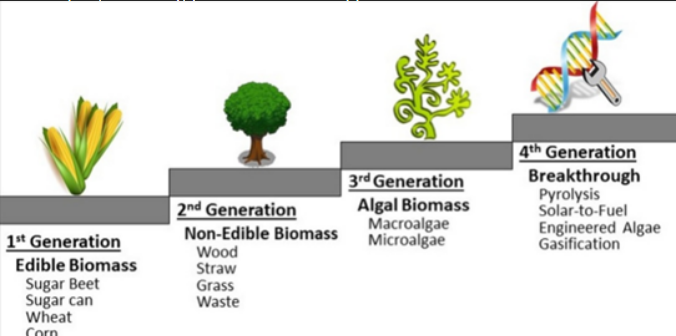
Limitations of Electric Vehicles:
Certain limitations of EV require complementary biofuel strategy for decarbonization of transportation:
- Capital Intensive transition: for a transition to EVs, existing internal combustion engine (ICE) vehicles and the supporting infrastructure need to be replaced entirely, which is capital intensive.
- Mining of minerals: the required batteries and critical minerals used in them need to be imported, adding to environmental concerns on how these minerals are mined, among other issues.
- Biofuels, on the other hand, can be used in existing ICE engines and infrastructure with little to no modifications (depending on the blending rates) and offer import independence.
About Global Biofuel Alliance:
- Global Biofuel Alliance is being established by India, Brazil and US which together account for 85% of global Ethanol Production. It will be an international platform for sharing best practices, promoting sustainable biofuel development and enhancing its application.
- It aims to impact global energy architecture and achieve the target of net-zero emissions.
- Objectives of Global Biofuel Alliance are:
- Promotion of International collaboration and cooperation to encourage the acceptance and utilisation of biofuels.
- Development of robust markets for biofuels and facilitating global trade in biofuels.
- Intensification of the use of sustainable biofuels in the transportation sector.
- Development of concrete policy lesson-sharing and provision of technical support for national biofuels programs worldwide.
Challenges to scaling up of Biofuel in India:
- Use of 1st Generation biofuel: 1st generation biofuel sourced from food crops, are primarily used in India. The policy target of achieving 20% ethanol blending (E20) by 2025-26 is also expected to be met by 1G ethanol putting stress on agricultural produce.
- Groundwater depletion could triple during 2040-81. This could be partly attributed to increase in crop water requirements. Thus producing fuel from food crops would become unsustainable.
- Stagnation of crop yield: India’s crop yields have already stagnated, and global warming is expected to reduce yields. So, the strategy to meet blending targets cannot depend on surplus crop production.
- GHG emissions from agriculture sector: Agriculture sector has high direct GHG emissions. Thus depending on a sector with high GHG emissions to decrease emissions from the transport sector is a not beneficial balancing loop.
Measures for decarbonization of transportation:
- Use of Biomass: Biomass should be prioritised for sectors where there are limited low-carbon alternatives. Long-haul aviation and road freight segments, wherein complete electrification might take longer to achieve, could use biomass as an alternative energy source.
- Increasing production of 2G biofuels: For net zero by 2050, biofuel production needs to be tripled by 2030. 2G ethanol could be counted as a sustainable fuel, especially if the production is decentralised, i.e., crop residues do not have to be transported large distances to a central manufacturing plant
- Global Biofuels Alliance could help drive innovation and technology development in establishing an efficient biomass supply chain and smaller-scale decentralised biofuel production units.
Source - The complex path to biofuel sustainability - The Hindu
Share the article
Edukemy’s Current Affairs Quiz is published with multiple choice questions for UPSC exams
MCQ
Get Latest Updates on Offers, Event dates, and free Mentorship sessions.

Get in touch with our Expert Academic Counsellors 👋
FAQs
UPSC Daily Current Affairs focuses on learning current events on a daily basis. An aspirant needs to study regular and updated information about current events, news, and relevant topics that are important for UPSC aspirants. It covers national and international affairs, government policies, socio-economic issues, science and technology advancements, and more.
UPSC Daily Current Affairs provides aspirants with a concise and comprehensive overview of the latest happenings and developments across various fields. It helps aspirants stay updated with current affairs and provides them with valuable insights and analysis, which are essential for answering questions in the UPSC examinations. It enhances their knowledge, analytical skills, and ability to connect current affairs with the UPSC syllabus.
UPSC Daily Current Affairs covers a wide range of topics, including politics, economics, science and technology, environment, social issues, governance, international relations, and more. It offers news summaries, in-depth analyses, editorials, opinion pieces, and relevant study materials. It also provides practice questions and quizzes to help aspirants test their understanding of current affairs.
Edukemy's UPSC Daily Current Affairs can be accessed through:
- UPSC Daily Current Affairs can be accessed through Current Affairs tab at the top of the Main Page of Edukemy.
- Edukemy Mobile app: The Daily Current Affairs can also be access through Edukemy Mobile App.
- Social media: Follow Edukemy’s official social media accounts or pages that provide UPSC Daily Current Affairs updates, including Facebook, Twitter, or Telegram channels.

